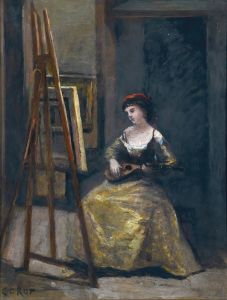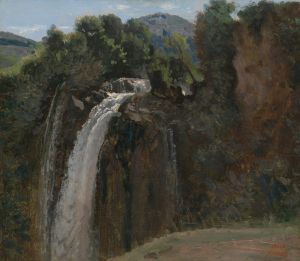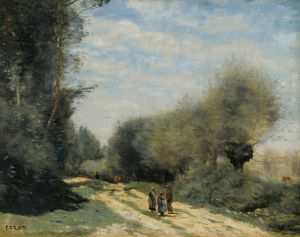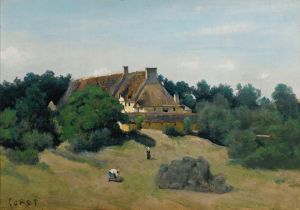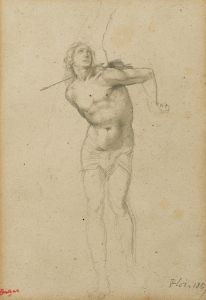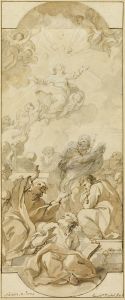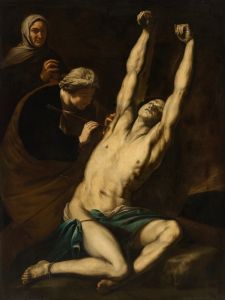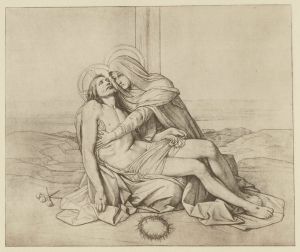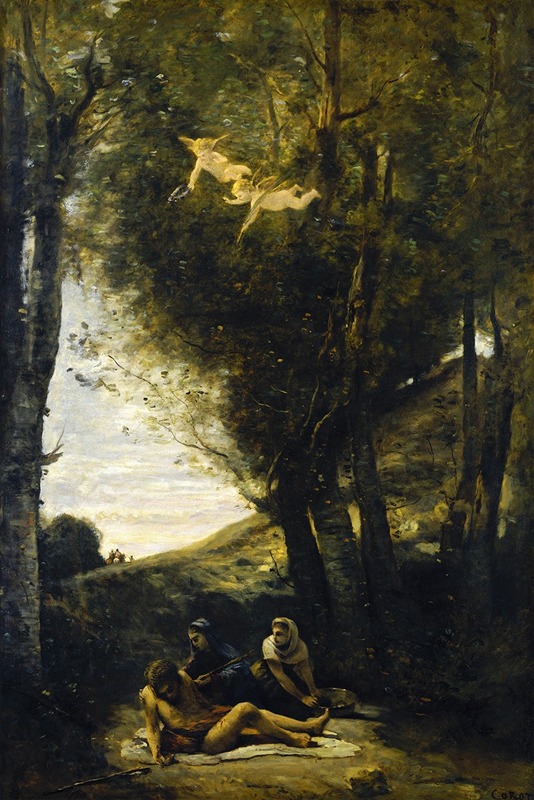
Saint Sebastian Succored by the Holy Women
A hand-painted replica of Jean-Baptiste-Camille Corot’s masterpiece Saint Sebastian Succored by the Holy Women, meticulously crafted by professional artists to capture the true essence of the original. Each piece is created with museum-quality canvas and rare mineral pigments, carefully painted by experienced artists with delicate brushstrokes and rich, layered colors to perfectly recreate the texture of the original artwork. Unlike machine-printed reproductions, this hand-painted version brings the painting to life, infused with the artist’s emotions and skill in every stroke. Whether for personal collection or home decoration, it instantly elevates the artistic atmosphere of any space.
Jean-Baptiste-Camille Corot, a prominent French landscape and portrait painter, is known for his pivotal role in bridging the neoclassical tradition and the plein-air innovations that heralded the Impressionist movement. Among his diverse body of work is the painting "Saint Sebastian Succored by the Holy Women," which reflects his mastery in capturing both human emotion and the subtleties of nature.
"Saint Sebastian Succored by the Holy Women" is an evocative depiction of the Christian martyr Saint Sebastian, a subject that has been a recurring theme in Western art. Saint Sebastian, a Roman soldier who was martyred for his Christian faith, is often portrayed tied to a tree and pierced with arrows. However, Corot's interpretation focuses on the aftermath of this torment, highlighting the compassion and care provided by the holy women who attend to him.
Corot's painting is notable for its serene and contemplative atmosphere, a hallmark of his style. The composition is carefully balanced, with the figures of the holy women gently tending to the wounded saint. The use of light and shadow in the painting is particularly striking, as Corot employs a soft, diffused light that imbues the scene with a sense of tranquility and reverence. This treatment of light not only enhances the emotional impact of the scene but also demonstrates Corot's skill in creating depth and volume in his work.
The landscape in the background, while secondary to the figures, is rendered with Corot's characteristic attention to detail. The natural setting serves as a harmonious backdrop that complements the human drama unfolding in the foreground. Corot's ability to integrate figures into their surroundings seamlessly is evident here, as the landscape and the figures are inextricably linked, each enhancing the other.
Corot's choice of subject matter reflects his interest in themes of compassion, redemption, and the human condition. By focusing on the moment of succor rather than the martyrdom itself, Corot offers a narrative of hope and healing. This approach aligns with the broader Romantic movement's emphasis on emotion and individual experience, which was prevalent during Corot's time.
The painting also exemplifies Corot's transition from his early neoclassical influences to a more naturalistic and expressive style. While his early works were characterized by precise lines and clear forms, "Saint Sebastian Succored by the Holy Women" showcases a softer, more fluid approach. This evolution in style is indicative of Corot's openness to experimentation and his influence on subsequent generations of artists.
"Saint Sebastian Succored by the Holy Women" is housed in the Musée des Beaux-Arts in Lyon, France. It remains an important work within Corot's oeuvre, illustrating his ability to convey profound emotion through a harmonious blend of figure and landscape. The painting continues to be appreciated for its aesthetic beauty and its insightful portrayal of a timeless narrative of compassion and resilience.









